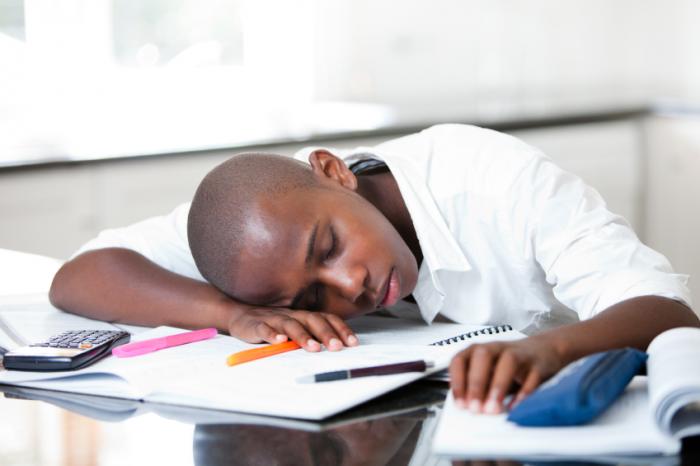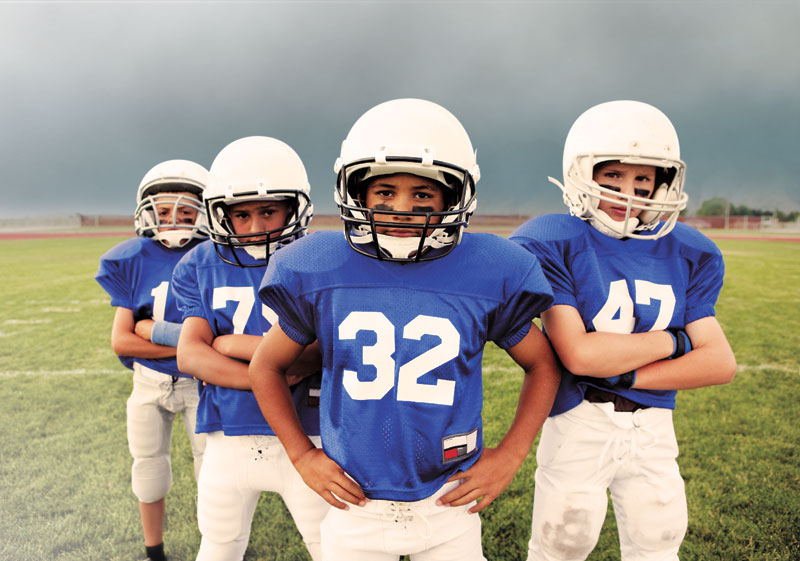When you think of sleep disorders in children, the first types likely to spring to mind are night terrors, nightmares and sleepwalking. These fall into a class of sleep disorders known as parasomnias.
It is estimated that up to 6.5% of children - particularly those aged 4-12 years - experience night terrors, defined as episodes of intense fear, screaming and flailing during sleep. Approximately 3% of preschool and school-aged children experience nightmares, while up to 15% of children aged 4-12 years sleepwalk.
Perhaps less associated with children and adolescents is
insomnia and
obstructive sleep apnea. In fact, insomnia, the inability to fall asleep or frequent awakening, is estimated to affect around 25% of children and teenagers. Obstructive sleep apnea - when an individual stops breathing for long periods during sleep - affects around 2-4% of children.
What are the causes and symptoms of childhood sleep disorders?
There are a number of factors that can cause childhood and adolescent sleep disorders.
Just like adults, children and teenagers can experience
stress, which can interfere with sleep. Consumption of energy drinks - which contain caffeine - is also known to disrupt sleep, as is use of certain medications, such as
antidepressants and corticosteroids.
Children and adolescents are also more likely to develop sleep disorders if they have a family history of such conditions, and poor sleep habits, or poor "sleep hygiene" - such as going to bed at irregular times or attempting to sleep in an inadequate environment - can negatively affect sleep quality.
Increasingly, researchers are pointing to the use of technology as a driver for sleep disorders. Last month,
Medical News Today reported on a study published in
BMJ Open that found children are
50% more likely to have problems getting to sleep if they spend 4 hours a day or more using media devices.
"In adolescents, with the increase in popularity of technology, many teens are staying up very late communicating with friends on smartphones and tablets. The stimulation and light exposure from these devices are associated with late bedtimes and insomnia," Dr. Neil Kline, a sleep physician and internist at the
American Sleep Association, told
MNT.
Although often harmless, snoring can be a major indicator for a sleep disorder in children and adolescents. It can be a sign of sleep apnea or disturbed sleep quality.
Other symptoms of sleep disorders to look out for include difficulty getting to sleep, daytime fatigue, poor memory, lack of concentration, reduced attention span, irritability and mood swings, hyperactivity and depression.
"If there is any concern for a sleep problem, such as a child taking longer than 20-30 minutes to fall asleep, not sleeping through the night after about age 1 year, or snoring, it is important to discuss this with the child's pediatrician, health care provider or a sleep doctor," Dr. Shalini Paruthi, a spokesperson for the American Academy of Sleep Medicine (AASM), told us.
Children and teenagers are not getting enough sleep
According to recently updated recommendations from the
National Sleep Foundation (NSF), the number of hours sleep children and adolescents need is as follows:
 Over the past 20 years, the number of hours teenagers sleep each night has fallen.
Over the past 20 years, the number of hours teenagers sleep each night has fallen.
- Newborns (0-3 months): 14-17 hours a day
- Infants (4-11 months): 12-15 hours
- Toddlers (1-2 years): 11-14 hours
- Preschoolers (3-5 years): 10-13 hours
- School-age (6-13 years): 9-11 hours
- Teenagers (14-17 years): 8-10 hours.
However, it seems many children and teenagers are failing to meet sleep recommendations.
A
2014 poll from the NSF, which asked parents to estimate how much sleep their child gets on a school night, found that children aged 6-10 are only getting around 8.9 hours sleep a night, while 13-14-year-olds are only getting around 7.7 hours sleep each night.
More recently,
MNT reported on a study published in the journal
Pediatrics revealing that the number of hours teenagers sleep each night has
declined over the past 20 years.
The study, which involved more than 270,000 adolescents, found that 72% of 15-year-olds were getting at least 7 hours or sleep each night in 1991, but this fell to only 63% in 2012.
"Declines in self-reported adolescent sleep across the last 20 years are concerning and suggest that there is potentially a significant public health concern that warrants health education and literacy approaches," said lead study author Dr. Katherine W. Keyes, of Columbia University's Mailman School of Public Health.
But why is lack of sleep among children and adolescents a public health concern?
Sleep deprivation linked to obesity, diabetes and heart problems
Sleep deprivation can cause a number of health problems for children and adolescents, both in childhood and adulthood.
In 2011, a
study published in The BMJ claimed that children who do not get enough sleep are at significantly higher risk of becoming overweight, compared with children who get sufficient sleep.
Another study published in
The Journal of Pediatrics in December 2014 reported a similar finding, associating severe lack of sleep and sleep-disordered breathing in early childhood with
increased risk of obesity.
The researchers found that children with the shortest sleep time at the ages of 5 and 6 years were at 60-100% increased risk of
obesity by the age of 15, compared with children with sufficient sleep times.
"If impaired sleep in childhood is conclusively shown to cause future obesity, it may be vital for parents and physicians to identify sleep problems early, so that corrective action can be taken and obesity prevented," commented lead study author Prof. Karen Bonuck, from the Albert Einstein College of Medicine of Yeshiva University in New York, NY.
Past studies have also associated sleep apnea in children with delayed growth and
heart failure.
Lack of sleep 'makes it nearly impossible for children to reach their full potential'
It is widely accepted that sleep is important for learning and memory. In June 2014,
MNT reported on a study that suggested as such. It found that sleep after learning
boosts growth of connections between brain cells, helping them to communicate with each other.
A more recent study found that
sleep is particularly important for infants' learning skills. Published in the
Proceedings of the National Academy of Sciences, the researchers revealed that infants aged 6-12 months who had at least one 30 minute nap within 4 hours of learning a new skill were much more likely to demonstrate the skills they learned once they awoke.
With findings such as these, it is no wonder that lack of sleep and poor sleep quality has been associated with poor learning and educational attainment among children and adolescents.
A
2013 study conducted by researchers from Boston College in the UK found that sleep deprivation was a major contributor to poor grades in numerous countries. While taking literacy tests, 76% of American 9-10-years-olds were identified as sleep-deprived, and these students were found to have poorer results.
"I think we underestimate the impact of sleep. Our data show that across countries internationally, on average, children who have more sleep achieve higher in maths, science and reading. That is exactly what our data show," study co-author Chad Minnich told BBC News.
Dr. Paruthi believes sufficient sleep is crucial for a child's overall health and development. She told MNT:
"Sleep disorders in children and teens can hinder them in school, in social situations, in development and nearly every other aspect of their lives, with the negative impact potentially extending into adulthood. Without healthy sleep, it will be nearly impossible for children to reach their full potential."
Parents should not assume children will 'grow out' of sleep disorders
It is possible that as a child or teenager gets older, symptoms of their sleep disorder may ease. This is most likely for parasomnias, such as sleepwalking and night terrors.
But in some cases, sleep disorders can persist well into adulthood. "For example, children who have sleep apnea are more likely to develop sleep apnea as adults," noted Dr. Kline.
As such, sleep physicians say parents should not ignore signs of sleep disorders in children with the assumption they will "grow out" of them.
"Parents should never assume that their child will grow out of a sleep disorder," Dr. Paruthi told us. "Parents should talk to their child's doctor about how their child sleeps and discuss any potential sleep problems. It is important for a doctor to monitor sleep problems during childhood, identify any underlying causes and prescribe appropriate treatment when necessary."
Depending on what form of sleep disorder a child has, there are a number of treatments available. Doctors may recommend a melatonin supplement, for example. Melatonin is a natural hormone made by the body that helps regulate sleep.
Cognitive behavioral therapy may also be useful, in which psychological approaches - rather than medication - are used to improve a child's sleep time and quality.
Tips to improve a child's sleep
But while there are a number of therapies that can help treat symptoms of sleep disorders, there are many things the NSF say parents can do to improve the likelihood of their child getting a good night's sleep:
 The NSF say parents should ensure their child is sleeping in an adequate environment; if it is too noisy, too cold or too hot, this can disrupt sleep.
The NSF say parents should ensure their child is sleeping in an adequate environment; if it is too noisy, too cold or too hot, this can disrupt sleep.
- Make sleep a primary health priority in your family
- Talk to your child about the importance of sleep for their health and well-being
- Set regular bedtimes for yourself and your children and stick to them
- Be aware of how your child is using media devices in the bedroom and set boundaries for use before bedtime
- Ensure you and your child are educated on how light from media devices may impair sleep
- Rather than watching TV, playing video games or browsing the Internet before bedtime, encourage your child to read a book or listen to music
- Ensure your child is sleeping in an adequate environment; if it is too noisy, too cold or too hot, this can disrupt sleep
- Talk to your child's teacher to find out about their alertness during the school day, and ask them to inform you if they fall asleep in lessons.
To find out more about how to improve your child's sleep, visit the
NSF website. Our Knowledge Center articles provide more general information on specific sleep disorders, including
obstructive sleep apneaand
insomnia.










